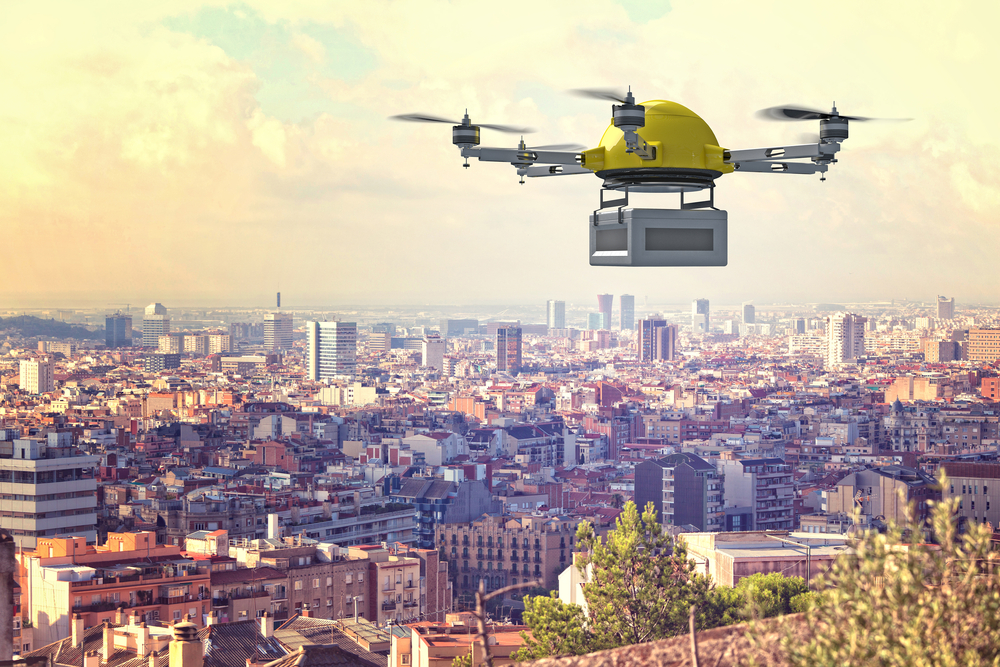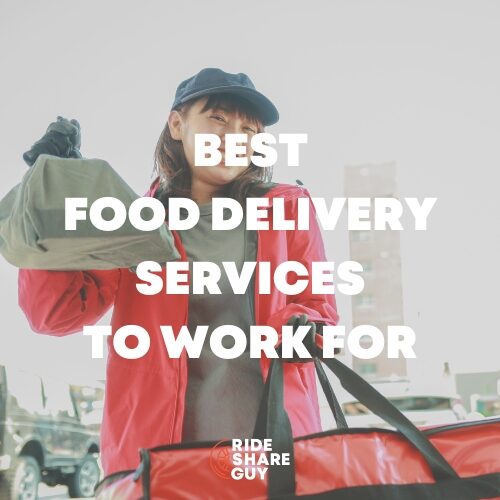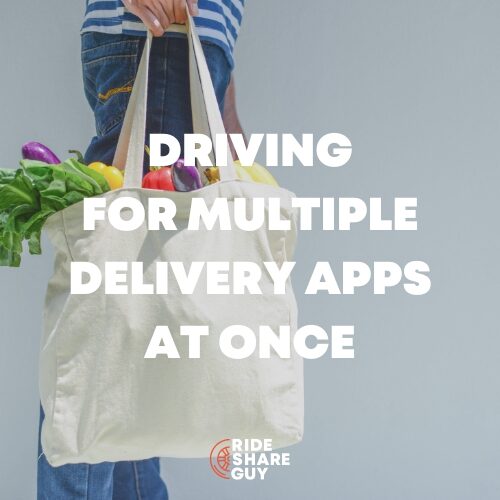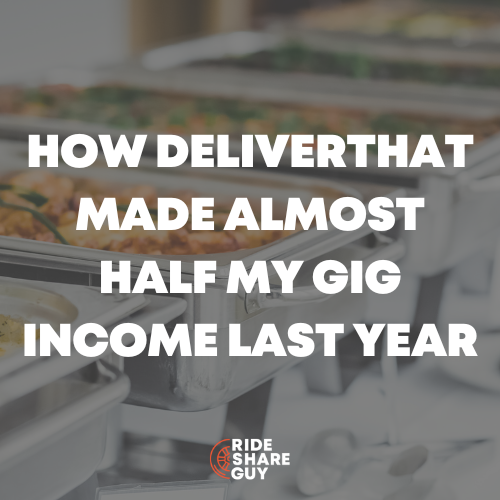One question we get a lot here at The Rideshare Guy is: could robots take delivery jobs? While it is possible, ‘delivering’ is a lot more complex than picking up at Store A and delivering to Customer B. Below, senior RSG contributor and Dasher pro Dash Bridges looks into what it would take for robots to truly ‘take over’ delivery jobs.
Quick Summary:
• Are Dashers about to be replaced by robots? Not immediately, but keep an eye on it
• Automation still faces issues like live problem-solving skills
• Companies like Tortoise are incorporating humans into the delivery space – safer, easier to react to customer service issues
When Will You Be Replaced By a Robot?
We’ve seen a lot of upheaval in food delivery over the past year. First, COVID-19’s impact brought millions of people into the industry when their jobs disappeared. Then a number of labor issues highlighted a national discussion about guarantees for gig workers, followed by a response from the industry in the form of a landmark California ballot initiative, Proposition 22.
Now, as tech solutions continue their relentless push forward in artificial intelligence (AI) and machine learning (ML), another concern might spread among drivers:
Will I be replaced by automation?
“Silly Dash! I already voted for Prop 22 and won’t earn normal employee wages anyway! They won’t replace me. Right?”
Sorry, Dasher. Similar to previous versions of the fully-mechanized dark troopers in Mandalorian Season 2, your humanity is a gaping flaw in this beautiful network. The time and expense involved in your recruitment, support needs, and reasonable compensation demands makes you…well, necessary only until they can find a viable replacement. Although it sounds cold, from an efficiency standpoint, it’s tough to argue. Automated delivery vehicles don’t miss shifts, don’t forget drinks and don’t need health care credits.
Thankfully this replacement won’t happen next week or even next year…but what about later this decade? It may depend on the scenario. There are a variety of different automation efforts for a number of different needs.
Who Are the Players in the Automated Delivery Field?
There are several companies developing AI and ML to create affordable alternatives to human delivery. Here are just a handful:
Uber, which recently acquired Postmates, is seeking investors to support a company developing an automated delivery vehicle called the Serve Robot. This robot has a small capacity for meal-size cargo.
Starship is also making a smaller delivery vehicle that travels on sidewalks or in bike lanes.
Nuro is making a car-sized robot that would fit on the road among other full-size vehicles. It’s designed to deliver groceries and other cargo.
Drones! Amazon already delivers some items via drone, and several companies are working through the considerable logistics of short-flight air delivery. Drones, which need to be approved by the Federal Aviation Administration, must consider weather conditions, birds, power lines, and liability for anything below them. Most drone tests take place in sparsely-populated areas, as it’s far easier to land a drone on a property in a rural area than in a city.
Tortoise is another company in the robotic delivery space, although more for groceries than restaurant food delivery. Tortoise is a robotic delivery startup that focuses on remote operations (so, still human-powered, just behind the scenes) as a transition to full autonomy.
 What Are the Limitations of Delivery Robots?
What Are the Limitations of Delivery Robots?
The first limitation is in battery technology. Although endurance, charge times, and costs have improved dramatically in recent years, they need sufficient power to travel at certain speeds and for certain lengths of time. Until they can find that capacity AND the ability to recharge themselves at the end of the evening, it will remain a constraint. Delivery companies need a solution that’s more cost-effective than those Lime Juicers who charge up bikes overnight.
Safety is obviously a major concern. Automated vehicles understandably need to pass many local and federal safety standards. The public needs assurances that these vehicles will adhere to traffic and pedestrian safety laws. Working through the variety of government agencies and jurisdictions will take time.
To a lesser extent, companies need to ensure that your order will be safe, and come up with processes that will keep food (and robots) untouched throughout the delivery. Unfortunately, abuse and vandalism can lead to huge hardware and customer service losses.
As Harry points out in a tweet, there’s a lot to consider on the passengers’ side as well. Yes, robots will need batteries, recharging, maintenance, safety standards – but they also need to deal with the unpredictability of customer service.
Great article from @kirstenkorosec in TC about a robot courier, courtesy of Uber… but does anyone think this will be successful in most cities? https://t.co/NKSqZXKDsK
— Harry Campbell 🇺🇸 (@TheRideshareGuy) January 19, 2021
This is a big reason why Tortoise, mentioned above, seems to understand best this evolving delivery space. Tortoise is proudly not autonomous, and all deliveries are teleoperated remotely by human drivers. For this reason, Tortoise believes it can avoid some of the obstacles not only that government regulations will have, but also will be able to spot and tackle issues as they arise.
Stages of Automation
The US didn’t send a man to the moon in one giant project. The missions progressed over increased scope and complexity. The same will occur with delivery automation. In fact, there’s even a hierarchy of these automation levels, from current Dashers (Level 0) to fully automated under any conditions humans would navigate (Level 5).
Think about our dashing activities that are either easy or difficult to replace. As Dashers, we’re particularly good at keeping things upright, solving real-time customer service problems, climbing stairs, etc.
Your ability to drive along a well-traveled wide road is, eh, replaceable. Driving to destinations along public roads will be the first to automate. That’s why some of the first partially-automated trips will be done along high-volume corridors; for instance, a popular restaurant row that serves a nearby residential high-rise or college.
These routes could utilize a different Dasher model. On the restaurant side, Dashers (Packers?) serve as a liaison at the front end, moving orders from restaurant to robot, and sending them away. The vehicle then travels unaccompanied to a convenient residential location for a waiting Dasher (Receiver?) to unload the meal from the robot and deliver the last 100 yards.
In this scenario, instead of, say, 10 Dashers at various points along a delivery corridor, you may have two Dashers on the restaurant side and two Dashers on the delivery end while the robots travel 98% of the delivery distance.
The automated portion won’t occur in a single rollout either. On the RSG podcast episode ‘How Uber Got Into Micromobility with Tortoise Founder Dmitry Shevelenko’, Harry talked to the founder of Tortoise, Dmitry Shevelenko about this. Shevelenko described pairing semi-automated robots with tele-operators who use cameras and sensors to navigate the robots out of unusual situations, i.e. heavy traffic, road construction or pedestrians. These operators would work remotely, similar to a commercial or military drone operator.
Engineers, entrepreneurs and regulators have a lot to do before your Dashing gig dries up. However, change is coming and extremely smart people will pursue others ways of how to make money. Any Dasher out there should not assume he or she can do this forever.
Now get out there and drive safely, while you still can!
Are you worried about being replaced by a robot? How far off do you think AI and ML technology is from taking jobs from gig workers?
-Dash @ RSG




